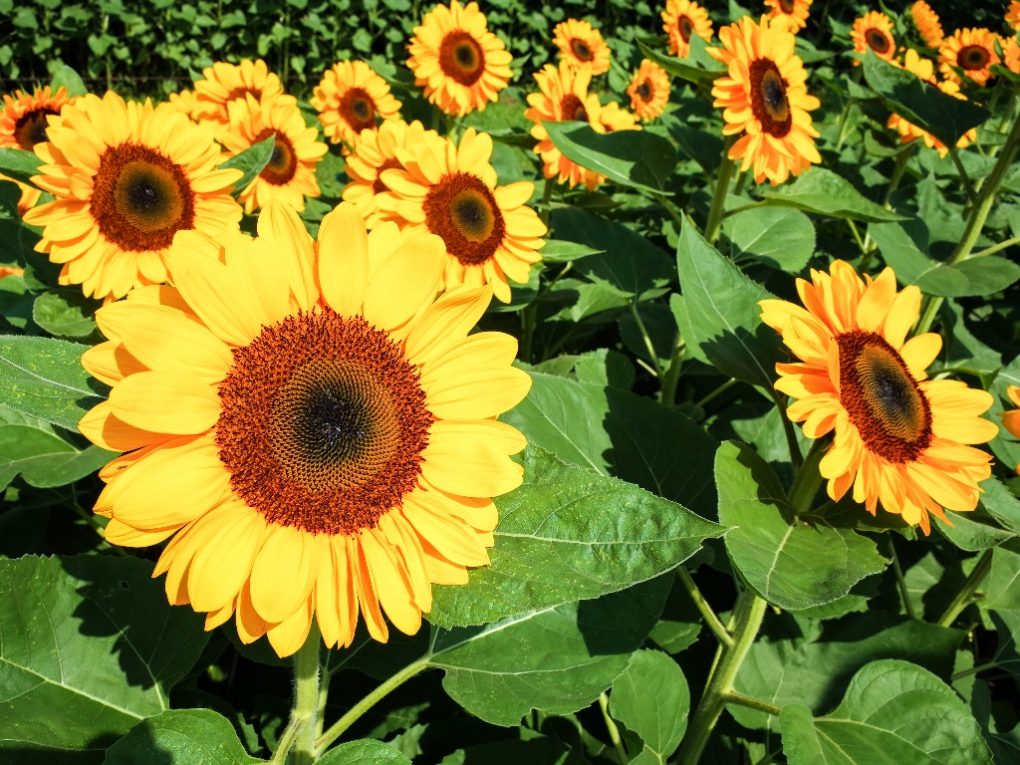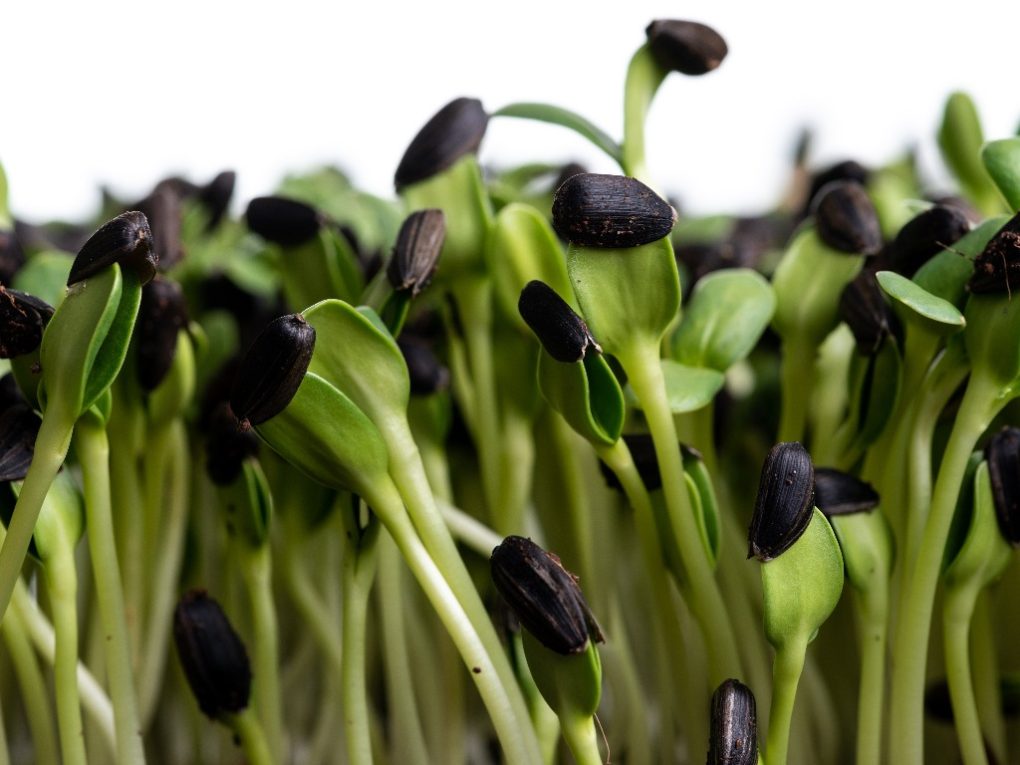How Long Sunflowers Bloom: Ways to Help a Sunflower Bloom for Longer
Annual sunflowers typically bloom for about 3 to 4 weeks, while perennial ones bloom for 8 to 12 weeks. The flower heads will open up during this time, and the yellow petals will begin to show. Sunflowers are typically grown in the summer, and their blooming period usually occurs during this time.

The blooming period of sunflowers can vary depending on various factors, such as the climate, the specific variety of sunflowers, and the growing conditions. After the blooming period, the flowers will wilt, and the seeds will mature.
Table of Contents
Ways to Help Sunflowers Bloom for Longer
Choose the Right Location
Sunflowers need plenty of sunlight to grow and bloom. Choosing a location that receives at least 6-8 hours of direct sunlight per day is essential. If sunflowers don’t receive enough sunlight, their growth will be stunted, and their blooming period will be shortened.

Strong winds can damage sunflowers, particularly when they are in bloom. Choosing a location sheltered from strong winds can help protect the flower heads from being knocked over or damaged. A protected location can also help the sunflowers retain moisture, which is important for their growth and blooming.
Sunflowers prefer well-drained soil that is rich in organic matter. Choosing a location with soil draining well can help prevent waterlogging and root rot, which can inhibit growth and blooming.
In addition, sunflowers prefer to avoid competition from other plants, particularly regarding nutrients and water. For example, choosing a location where sunflowers have plenty of space and aren’t competing with other plants for resources can help them grow and bloom more effectively.
Plant at the Right Time
Sunflowers are warm-season plants that thrive in temperatures between 25°C and 28°C. Planting sunflowers after the last frost in the spring, when temperatures have warmed up, can provide optimal growing conditions for the plant.

By planting sunflowers at the right time, you can ensure they have a longer growing season to mature and produce flowers. Planting them early enough in the season can allow them to bloom longer.
Sunflowers can be sensitive to extreme temperatures, both hot and cold. Planting sunflowers too early in the season when the temperatures are still cool can result in poor growth and blooming. Similarly, planting them too late in the season, when temperatures start to drop, can also cause problems with blooming.
Planting sunflowers at the right time can also ensure the soil is warm and moist, which can help the plant establish its roots and grow more effectively. This can lead to a stronger and healthier plant that will likely bloom for longer.
Water Regularly

Water is essential for plant growth and development; sunflowers are no exception. Regular watering can keep the plant hydrated, which is necessary for healthy growth and blooming. Sunflowers require about an inch of water per week from rainfall or irrigation.
Water helps to dissolve essential nutrients in the soil, making them available for the plant to absorb through its roots. A lack of water can limit nutrient uptake, resulting in poor growth and blooming. Sunflowers are particularly susceptible to heat stress causing the leaves and flower heads to wilt and droop. Regular watering can help to cool the plant and prevent heat stress, allowing it to bloom for longer.
Aside from heat, drought stress can cause sunflowers to wilt and sag, and it can also inhibit blooming. Regular watering can prevent drought stress and ensure the plant has enough moisture to grow and produce flowers. In addition, frequent watering can help promote healthy root growth in sunflowers.
Fertilize Appropriately
Fertilizer provides essential nutrients such as nitrogen, phosphorus, and potassium for sunflower growth and blooming. Sunflowers require these nutrients in varying amounts at different stages of growth, and appropriate fertilization can ensure that they receive the right nutrients at the right time.

Nitrogen, in particular, is important for promoting leaf growth, which is necessary for photosynthesis and overall plant health. Phosphorus is essential for flower development, and appropriate fertilizing can ensure that sunflowers receive enough phosphorus to develop healthy flower buds. Potassium, however, can help promote the production of larger and more vibrant flowers.
Fertilizing can also help improve soil quality, leading to better growth and blooming in sunflowers. Organic fertilizers, such as compost, can help improve soil structure and fertility, leading to healthier plants and longer blooming periods.
While appropriate fertilizing can benefit sunflowers, it’s important to avoid over-fertilization, which can lead to problems such as salt buildup in the soil or excessive foliage growth at the expense of flowering. Following recommended application rates and timing can help ensure fertilization is appropriate for the plant’s needs.
Deadhead Regularly
Deadheading is a gardening technique that removes spent flowers from a plant, and it can help sunflowers bloom for longer. When a sunflower has finished blooming, it will often begin to produce seeds. If the spent flower head is left on the plant, it will focus its energy on seed production instead of new flower growth.

Deadheading removes the spent flowers, signaling the plant to produce more flowers instead of seeds. By removing spent flowers, deadheading can prolong the blooming period of a sunflower. This is because the plant will continue to produce new flowers as long as the spent ones are removed, resulting in a longer blooming period and more flowers overall.
Spent flowers can also become a breeding ground for pests and diseases, affecting the plant’s health. Deadheading can help prevent the spread of disease by removing potential sources of infection. It can also improve the appearance of a sunflower plant by removing unsightly spent flowers. This can lead to a more attractive, tidy garden and vibrant, healthy-looking sunflowers.
Deadheading can simulate the growth of sunflowers in the wild, where they would naturally drop their spent flowers and continue to produce new ones. Deadheading can help sunflowers grow and bloom more effectively by mimicking this natural process.
